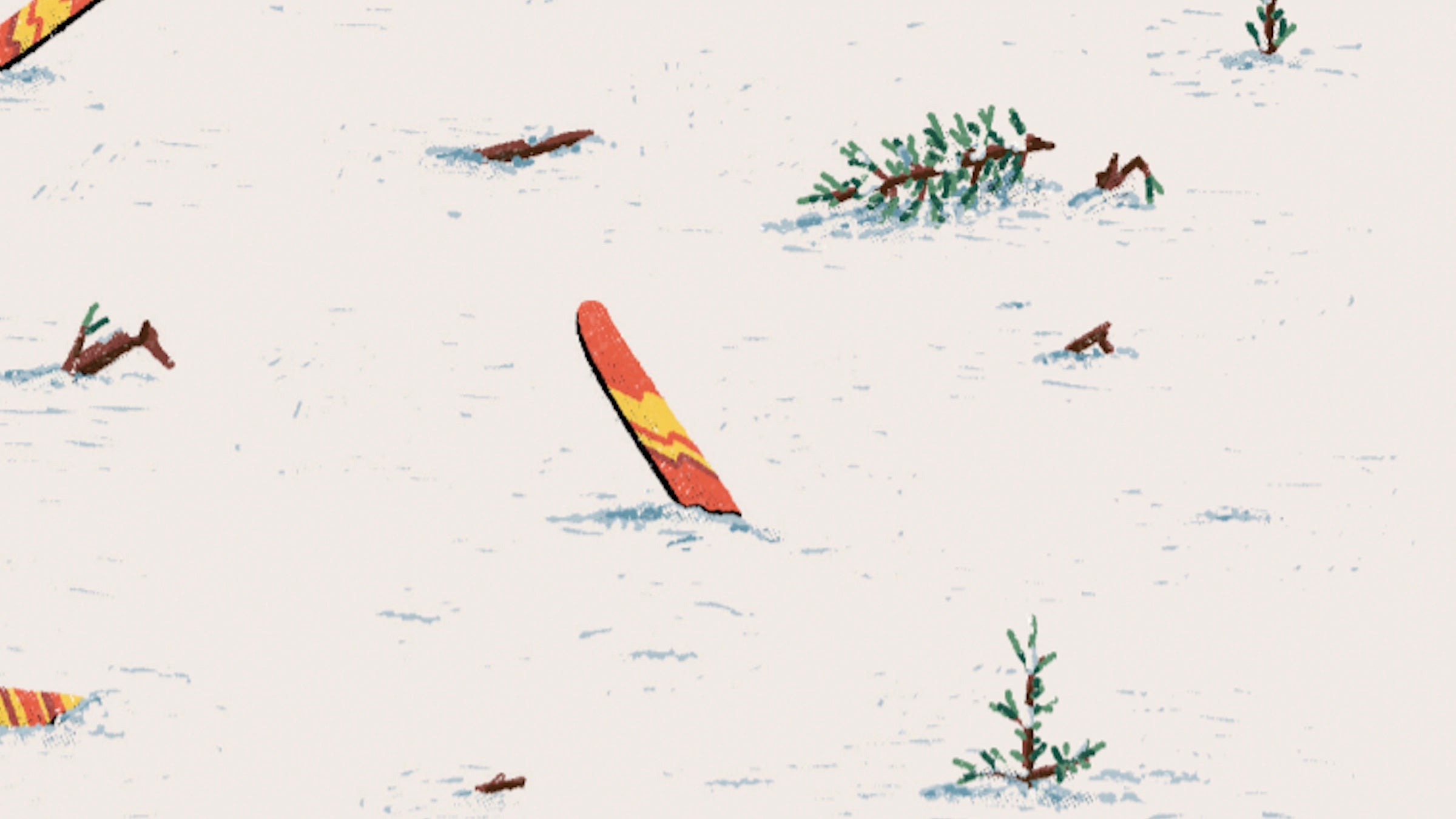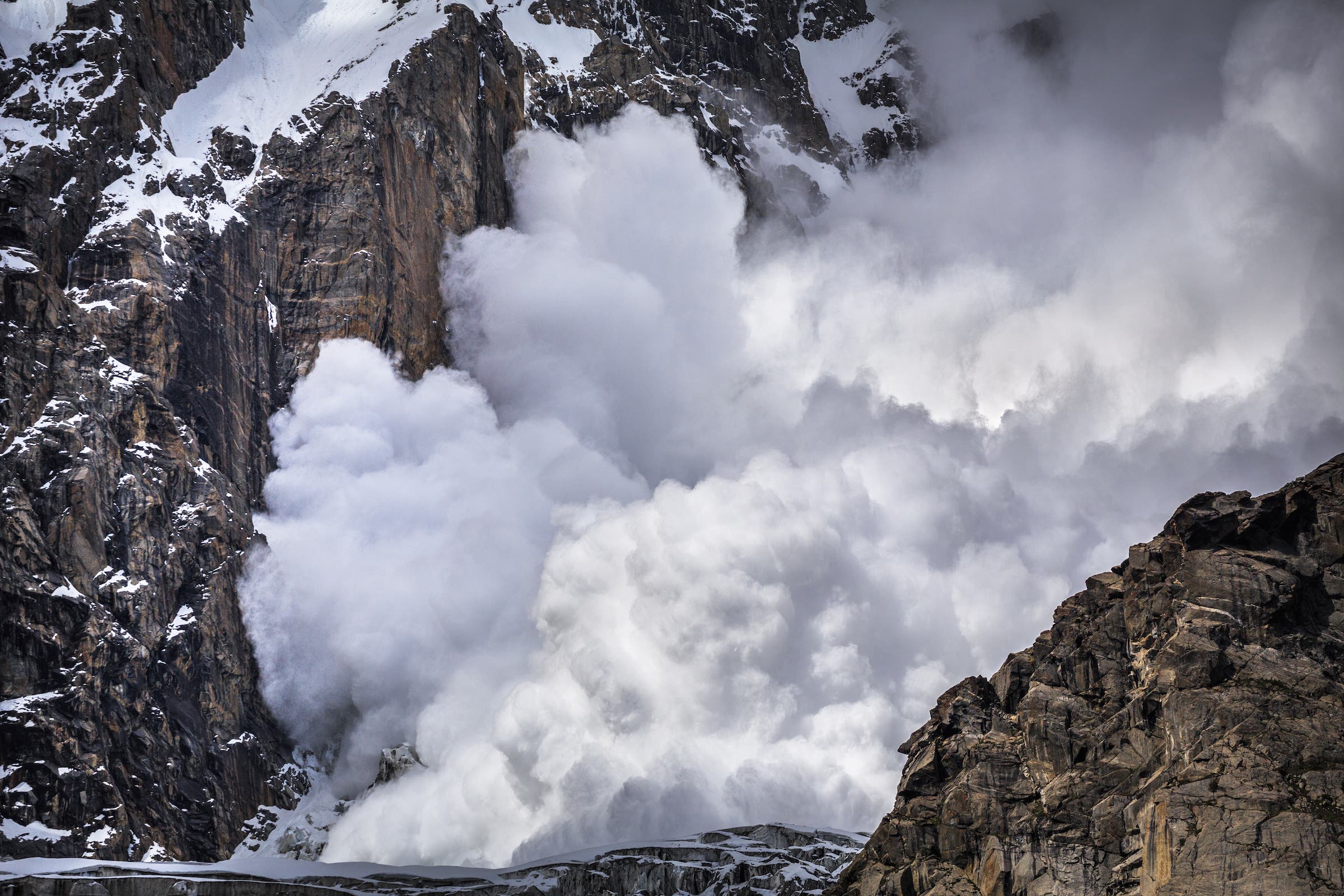These Skiers Accepted Death When An Avalanche Buried Them Alive

(Photo: Augusto Zambonato)
I felt the avalanche roll to a stop and the snow set like concrete around my chest until I could barely breathe. It was pitch-black beneath the surface, and I knew there wasn’t enough air to last more than a few minutes. There’s no one coming to dig me out, I thought. This is it.
A few weeks prior, my girlfriend Annick, myself, and two of our friends and ski partners, Matt and Laura, all secured a week off work for a backcountry trip. After checking forecasts near our home in Whitehorse, Yukon, we decided the most promising snow lay 14 hours away near Terrace, British Columbia. So, we headed south.
We hadn’t been to Terrace in years, and the snow was deep. The issue: The avalanche forecast was holding steady at “considerable,” which meant human-triggered avalanches were likely. We also knew there was a persistent weak layer, essentially a crust of ice crystals deep in the snowpack that could act like ball-bearings during a slide. But the backcountry spot we’d been eyeing was accessible by a long ridge feature—a catwalk over the trickiest terrain. If we spotted any evidence of avalanches on the hike in, it would be easy to turn back.
We started our first tour of the trip under pale blue skies. We triggered two little slides on our hike in, and by lunch, we were ready to pull the plug. But as we ate, we watched enviously as local skiers hit huge lines. The snow never budged. That night, we compared notes with some of those locals, and they helped us pick an area with slopes that were less likely to slide in the current conditions.
The next day, March 17, we did everything we were supposed to. We dug pits to analyze snow layers and discover any weaknesses on the hike up and at the top of our intended run. The snowpack seemed solid. So we went for it, and it was the run of our lives. Velvety snow, smooth turns, and a long, beautiful line—by the time we met up in the middle of the slope, we were high-fiving and laughing with joy. Annick was hesitant about continuing onto the second pitch, where the terrain was steeper. The others, too, seemed uncertain.
We could bail here, but the snow was amazing, the sun was out, and we hadn’t seen a hint of avalanche activity all day. And aside from a party of four we’d spotted earlier, we had the mountain all to ourselves. So, I brushed off their concerns and went for it.

I carved to the bottom of the slope, where I knew I should pull to to the side, back onto the track we took to ascend, where it was less steep. But I was having too much fun. I took 20 more turns then waited as my friends showed up beside me one by one. As I took off my skis to prepare for the climb back up, I turned to Matt, who was slightly below me. I was looking down at him, grinning and trying to share the moment, but he was looking at the mountain. He was the first to scream, “AVALANCHE!” The sound of it will be with me until the day I die. It was like an oncoming airplane, a dull and terrible roar. We turned and looked at the force that was descending upon us and saw a huge cloud of powder engulfing everything in our sight.
Out of our skis, we started running, but we didn’t have a chance—the snow swallowed us, and I felt like a ragdoll in a washing machine. In seconds, it carried us more than 1,300 vertical feet. All I could do was hope I’d end up on top. But as soon as it stopped, I knew our luck had run out. I couldn’t tell which way was up, and it was impossible to move. I could hear creaking as the snow settled around me, entombing my body. I choked on the snow caught in my throat, but there wasn’t enough air to cough. For a while, I focused on breathing whatever was left.
I thought about my life—how short it was, but how sweet. I was sad to die, but I felt ready; after all, I had no choice. Calm washed over me as I lost consciousness. In the meantime, the party we’d spotted earlier had seen the whole accident. They skied down to Matt, who had lost his gear in the slide but managed to cling to a tree, narrowly avoiding burial. Together, the five of them split up, sweeping the slope in a grid pattern, searching for us with beacons. They found Laura first. Then Annick. Then me. I had been buried 5 feet deep, for more than 20 minutes. Many avalanche victims don’t survive that long. Ten more minutes under the snow, and my odds of dying would have been more than likely.
When I heard the rescuers’ voices, I thought I’d reached an afterlife. It wasn’t until they pulled me into the sunlight that I realized I’d survived. I felt drunk from the lack of oxygen and the relief of being alive. I whistled to hear my voice and looked at my hands to make sure they were real. The four of us couldn’t stop laughing—or crying. Since then, guilt and shame of choosing to ski the run have come in waves, but above all, we feel grateful. To this day, we all celebrate March 17 as our second birthdays. We should have died. Instead, we got a second shot at life.